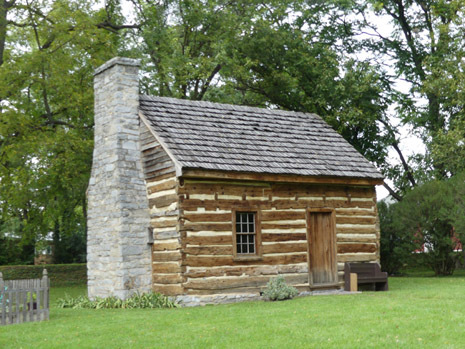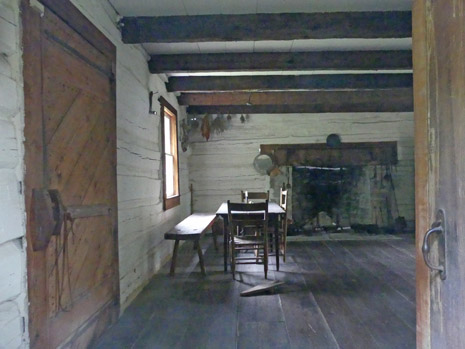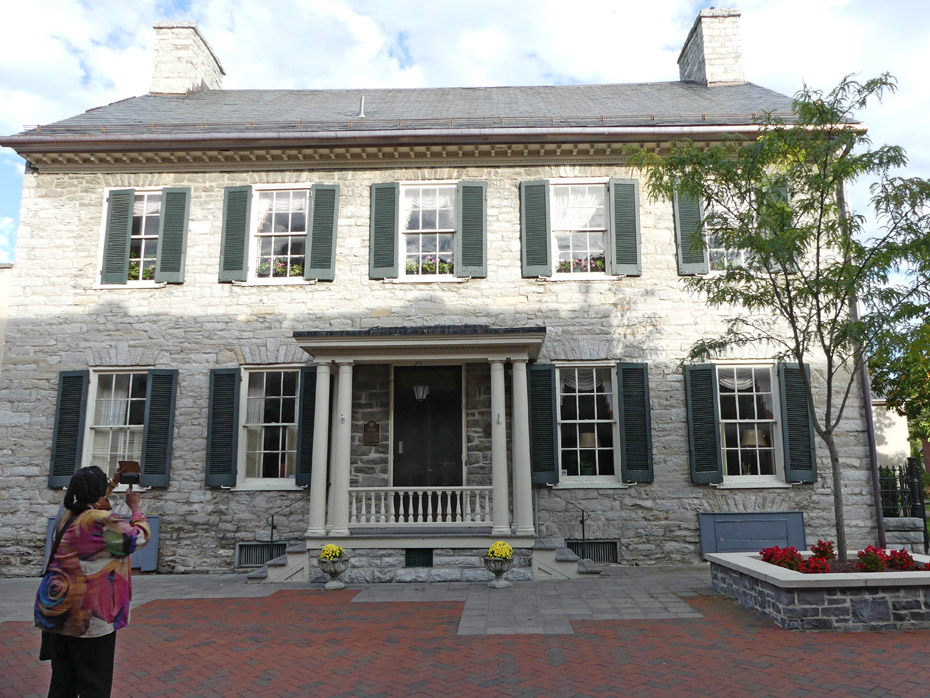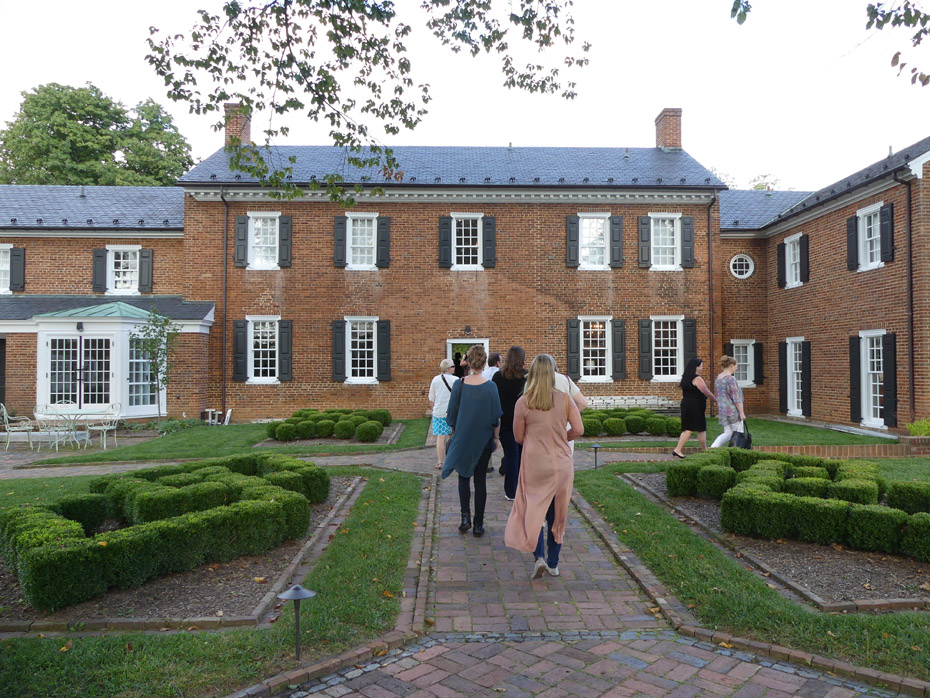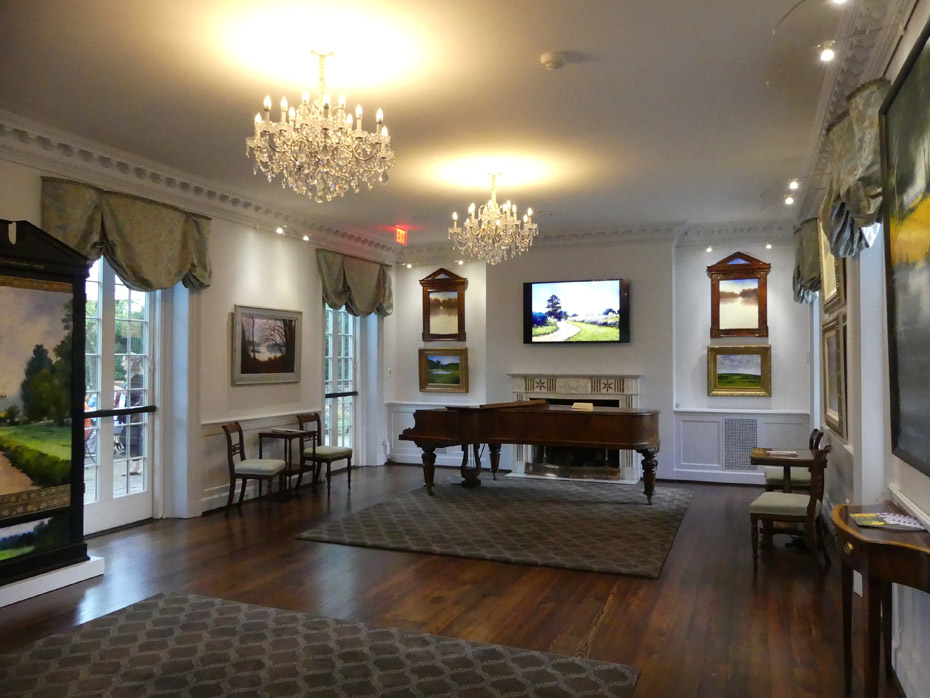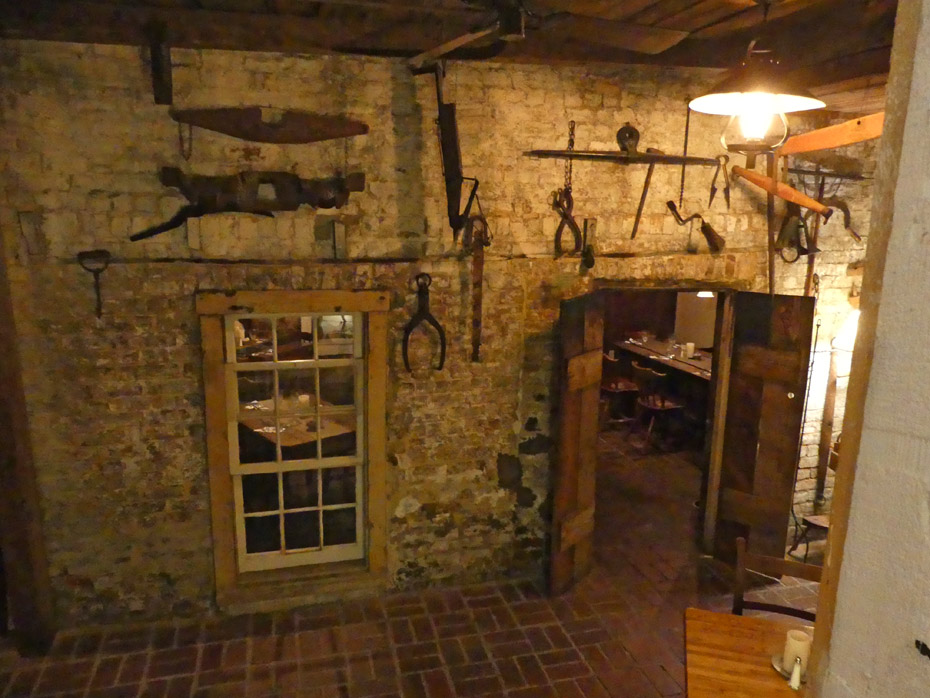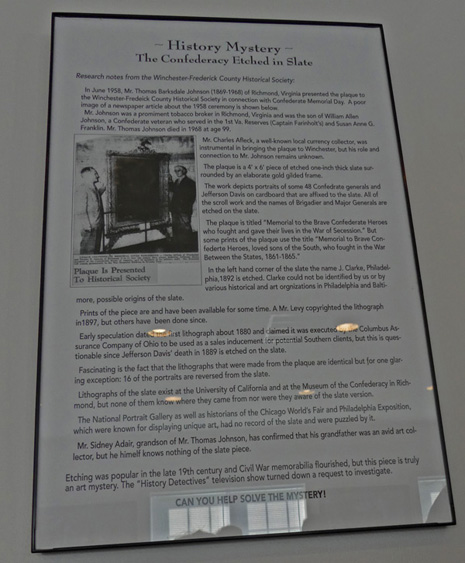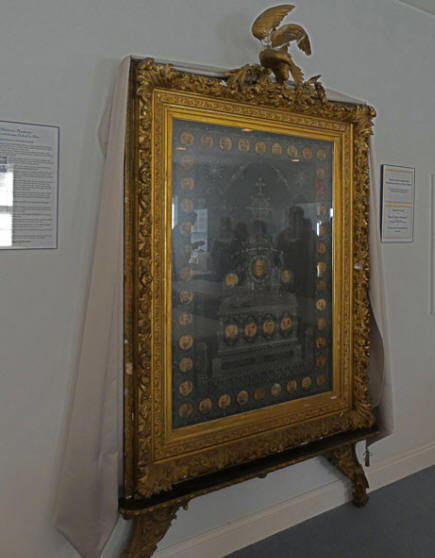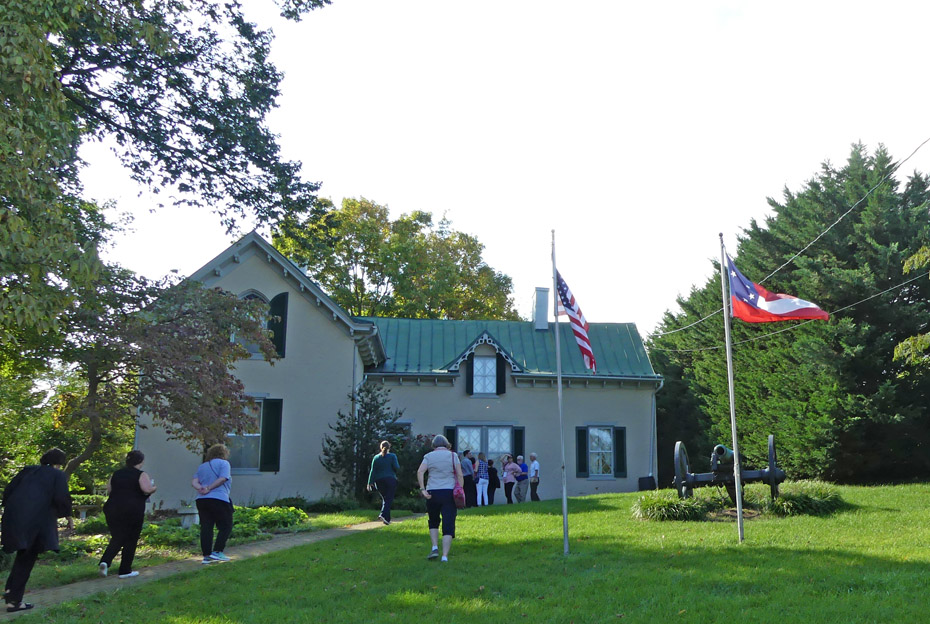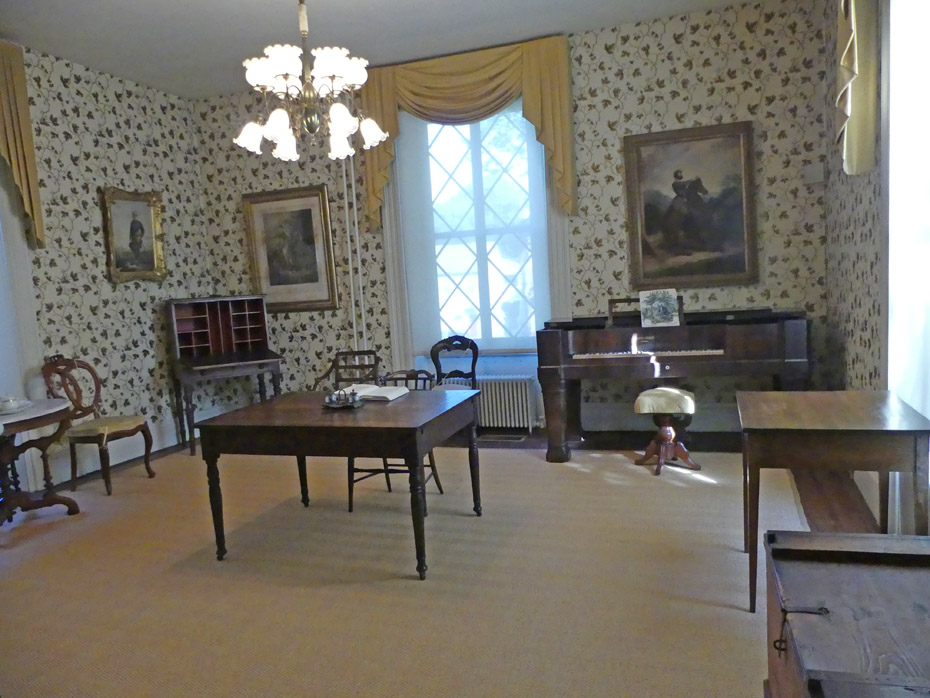
|
|
|
|
|
|
Winchester, Virginia was
immersed in three of American's wars, French and Indian
War, American Revolution and Civil War. During the
French and Indian War and Revolution, it was an emerging
frontier. In what is now Winchester a young Colonel
George Washington designed and ordered construction of
Fort Loudoun in 1756 for protection during the French
and Indian War. George Washington spent a good amount
of time in Winchester.
By the time of the Civil War, the fort had been
pretty much dismantled. Many of the houses along Loudoun
Street are said to be constructed with material from the
fort. Winchester was very much in
the crossfire during the Civil War. There were
numerous battles fought in and around Winchester. The
town was captured and occupied five times during the
course of the war. That means numerous museums in
Winchester retelling that all that history. Here
are a few I visited while in Winchester. Abram's Delight
Abram's Delight is the oldest
home in Winchester. Abraham Hollingsworth, a Quaker,
came to Winchester in 1728. He began construction on
this house before his death in 1748. It was completed in
1754 by his son, Isaac, and served as the first local
Quaker meeting house. A log cabin located on the west
lawn is a reconstruction of his first home.
Mary Hollingsworth, one of the fifth generation descendants, was living in Abram's Delight during the Civil War. She was very tall, around six feet and is believed to have posed as a man and acted as a Confederate spy. Abram's Delight served as a
hospital for both sides during the war. It's open for
tours. The Winchester-Frederick County Historical
Society is located in what was once the family’s mill
next door. It is worth a visit for information about the
area as well as for a small but interesting museum
located there.
https://winchesterhistory.org/abrams-delight/
Godfrey
Miller Home
The Godfrey Miller home is
one of the Loudoun Street homes. It dates to about 1785
and was built by Daniel Sowers. There is a unique
feature in the home, a Chevron Batten door also known as
a "sheathing door" because it was supposedly
Indian-arrow proof. The door and its hinges pre-date the
home and I could not find any indication as to whether
or not it came from Fort Loudoun but the arrow-proofing
indicates the door probably was in use during the French
and Indian War period. Godfrey Miller Home was
renovated and reopened in 2004. Private tours are
offered for groups and the home is open to the public
the first Friday of each month beginning in April
through November.
Loudoun Street is a well-maintained-pedestrian mall
with shops, restaurants and historical treasures.
http://www.godfreymillerhome.org/
The Old
Court House Civil War Museum
Old Court House is a Georgian
style historic building on the Loudoun Street. It was
used as a hospital, barracks and prison by both sides
during the War thus it was a natural to house the Civil
War Museum. The building is filled with over 3,000 Civil
War artifacts and contains graffiti from both Northern
and Southern soldiers. It is just down the street from
the Godfrey Miller Home.
Museum of
the Shenandoah Valley
The Museum of the Shenandoah
Valley is a great place to get a feel for Shenandoah
Valley. The museum encompasses the art, history, and
culture of the Shenandoah Valley. The museum complex
includes Glen Burnie, a historic house dating to the
eighteenth century, and its six acres of gardens.
Glen Burnie is situated on
land that Winchester's founder, James Wood surveyed,
claimed, and settled in 1735. Wood's son, Robert, built
the home between in 1794 and 1797. During the Civil War, both
sides occupied Glen Burnie several times during all
three major Winchester battles in 1862, 1863, and 1864.
It was at a strategic location near the North Western
Turnpike between Winchester and Romney. The property
suffered extensive damage. After the war, the family
moved to Oklahoma but retained possession of Glen
Burnie.
The last Glass heir, Julian
Wood Glass Jr., renovated Glen Burnie between 1958 and
1959. He and his partner, R. Lee Taylor, used the home
as a retreat. Both men were avid art lovers. Glass had
one of the most remarkable private collections of
decorative arts in the area. Taylor created beautiful
miniatures that are on display in the museum. After
Glass's death, his will dictated Glen Burnie be
preserved as a museum.
Wayside Inn
at Larrick's Tavern
Wayside Inn at Larrick's
Tavern began in 1797. Originally named Wilkenson's
Tavern, Jacob Larrick bought the Inn
sometime before the Civil War and changed the name to
"Larrick's Hotel". It grew during the Civil War and
again in 1908 when the new owners expanded with two more
room on one side and a third floor. Today it offers 22
guest rooms and suites. Becky Reese and her husband
currently own it. Becky said, "There is paranormal
activity in some rooms. Rooms14, 15, 16 and old kitchen
are the most active."
That's not surprising since
Wayside Inn served as a hospital during the Civil War.
In addition, Larrick's Tavern was host to generals of
both sides as well as artist-correspondent James E.
Taylor who reported on wartime activities in the
Shenandoah area. Union Col. Charles Russell
Lowell, a member of Sheridan's Calvary was mortally
wounded just outside the inn during the Battle of Cedar
Creek. It holds the distinction of
being the oldest running inn in the country.
http://www.alongthewayside.com/
Belle Grove
Belle Grove was old when the
Civil War battle of Cedar Creek was fought nearby. Belle
Grove was built between 1794 and 1797 by Isaac Hite Jr.,
a grandson of the original land grant holder, Jost Hite.
Isaac Hote was a major in the Continental Army during
the Revolutionary War. He married Nelly Conway Madison,
sister of future President Madison. His father gifted
him with 483 acres and his father-in-law, James Madison,
Sr. gave them 15 slaves. By the time Belle Grove passed
out of Hite ownership in 1851, it had grown to 7,500
acres and contained a general store, a grist-mill, a
saw-mill and a distillery all maintained over the years
by 276 enslaved people.
It was occupied several times
throughout the war. The most documented occupation was
by Union General Philip Sheridan in the fall of 1864
when Belle Grove found itself in the center of the
Battle of Cedar Creek on October 19, 1864.
Confederate General Jubal Early attempted a surprise
attack to retake Belle Grove but the endeavor failed and
Sheridan held fast.
You can tour the mansion,
battlefield, and a blacksmith forge on site. The
historians are working hard to recover information about
the Hite family as well as the enslaved people who lived
and died here. The manor house is maintained as it was
during the Hite residency but because of subsequent
sales, little of the original Hite furnishings remain. Cedar Creek and Belle Grove
National Historic Park preserves not only Civil War
history but the earlier history of the Shenandoah
Valley. Belle Grove is one of the best preserved
historic mansions in the area. It's a National Historic
Landmark, Virginia Historic Landmark, and historic
property of the National Trust for Historic
Preservation. There is a trail in the park that accesses
a portion of the battlefield.
Kernstown
Battlefield
Brightside, the Prichard
family Greek Revival farmhouse was built in 1854 by
Samuel Rees Pritchard. Little did he know it would be
the scene of not one but two Civil War battles. The farm had been in his
family since 1756. On March 23, 1862, Samuel, his
pregnant wife, Helen, and their three children, huddled
in the cellar listening to the roar of cannon over their
farm. When they emerged, the Union forces were in
control. The Pritchard home served as a hospital for the
wounded. Pritchards' home served as temporary
headquarters for Sheridan's cavalry chief, Gen. Albert
Torbert. Once again in the summer of
1863 Union artillery was again placed on Pritchard's
property in preparation for the Second Battle of
Winchester. The Prichards must have breathed a sigh of
relief when that battle moved on to Winchester. However their relief was
short lived. On July 24, 1864, history repeated itself
and the two armies were again in position preparing for
the Second Battle of Kernstown. The Union artillery,
atop Pritchard's Hill, was firing down at Confederate
placements. That day, over 12,000 Union soldiers and
about 17,000 Confederates went into battle. The family
once more retreated to the cellar. They emerged
this time to a different result. The Union had fled and
Confederates were in control. Again, the Pritchard home
became a hospital filled with wounded and dying men.
Col. James A. Mulligan, commander of the Union Army 2nd
Division, died here three days later.
The museum here is extensive
and has an interesting History's Mystery, a slate plaque
etched with the name of 48 Confederate generals and
Jefferson Davis each with a cardboard picture affixed to
the slate. Lithographs have been made from the slate
plaque in the late 1800s but 16 of the portraits on the
lithographs are reversed. Lithographs are at the Museum
of the Confederacy in Richmond and The University of
California but neither knows where the lithographs came
from or were aware of the slate version. There are many
other treasures in this museum as well.
http://www.kernstownbattle.org Stonewall Jackson's Headquarters
This Virginia and National Historic Landmark was built in 1854 by William McP. Fuller. It was the headquarters of General Thomas Jonathan "Stonewall" Jackson from November 1861 to March of 1862. It has the second largest collection of Jackson artifacts including his dining room table, his prayer table, his desk, his camp chair with original upholstery, and many other artifacts from Jackson, his wife, and staff. His office is preserved just as it was during his time here.
https://winchesterhistory.org/stonewall-jacksons-headquarters/
|
Connect with us on:
American Roads and | ||||||
|
Public Disclosure--
Please Read I recently learned of a FTC law requiring web sites to let their readers know if any of the stories are "sponsored" or compensated. American Roads and Global Highways' feature writers are professional travel writers. As such we are frequently invited on press trips, also called fam trips. Most of the articles here are results of these trips. On these trips most of our lodging, dining, admissions fees and often plane fare are covered by the city or firm hosting the trip. It is an opportunity to visit places we might not otherwise be able to visit and bring you a great story. However, no one tells us what to write about those places. All opinions are 100% those of the author of that feature column. |
|||||||
|
Privacy Policy/ Archives /
Contributors /
Subscribe to
American Roads Books by
Kathleen Walls /
Contact /
Sponsor or Advertise/ American Roads & Global Highways Home Page
|


